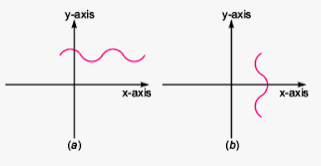Let S = {1,2,3}. Determine whether the function defined below has inverse. Find , if it exists: Solution in Punjabi
Step by step video & image solution for Let S = {1,2,3}. Determine whether the function f: S rarr S defined below has inverse. Find f^-1, if it exists: f= |(1,1),(2,2),(3,3)} by Maths experts to help you in doubts & scoring excellent marks in Class 12 exams.
Topper's Solved these Questions
Similar Questions
Which one of the following graph represents the function of x? Why?
 03:35View Solution
03:35View SolutionCompute P(A∣B),if P(B)=0.5 and P(A∩B)=0.32
03:15View SolutionState the reason for the relation R, in the set {1,2,3} given by R= {(1,2), (2, 1), not to be transitive.
View SolutionLet S={1,2,3}. Determine whether the functions f:S→S defined as below have inverses. Find f−1, if it exists
.(a) f={(1,1),(2,2),(3,3)}
(b) f={(1,2),(2,1),(3,1)}
(C) f={(1,3),(3,2),(2,1)}02:46View Solutionमान लजिए कि S = { 1,2,3} है | निधर्रित कीजिए कि क्या निचे परिभाषित फलन f:S→S का प्रीतमोल फलन है | f−1, ज्ञात कीजिए यदि इसका अस्तित्व है |
(a) f={(1,1),(2,2),(3,3)}
(b) f={(1,2),(2,1),(3,1)}
(c) f={(1,3),(3,2),(2,1)}View Solutionमान लीजिए कि S={1,2,3} है । निर्धारित कीजिए कि क्या नीचे परिभाषित फलन f:S→S के प्रतिलोम फलन है । f−1 ज्ञात कीजिए यदि इसका अस्तित्व है ।
(a) f={(1,1),(2,2),(3,3)},
(b) f={(1,2),(2,1),(3,1)} ,
( c) f={(1,3),(3,2),(2,1)}04:59View SolutionIf A={1,2,3},f={(1,1),(2,2),(3,3)} then on A, f is
03:44View Solutionमान लीजिए कि S={1,2,3} है , निर्धारित कीजिए कि क्या नीचे परिभाषित फलन f:S→S के प्रतिलोम है। f−1 ज्ञात कीजिए यदि इसका अस्तित्व है।
06:57View SolutionLet S={1,2,3}. Determine whether the functions f:S→S defined as below have inverses. Find f−1, if it exists.
(a) f={(1,1),(2,2),(3,3)}
(b) f={(1,2),(2,1),(3,1)}
(c ) f{(1,3),(2,3),(2,1)}06:40View SolutionLet S={1,2,3}. Determine whether the functions f:S→S defined as below have inverses. Find f−1, if it exists.
(a) f={(1,1),(2,2),(3,3)}
(b) f={(1,2),(2,1),(3,1)}
(c ) f{(1,3),(2,3),(2,1)}03:47View SolutionLet S={1,2,3}. Determine whether the functions f:S→S defined as below have inverses. Find f−1, if it exists.
(a) f={(1,1),(2,2),(3,3)}
(b) f={(1,2),(2,1),(3,1)}
(c ) f{(1,3),(2,3),(2,1)}01:39View SolutionLet S={1,2,3}. Determine whether the functions f:S→Sdefined as below have inverses. Find f−1, if it exists.(a) f={(1,1),(2,2),(3,3)}(b) f={(1,2),(2,1),(3,1)}(c) f =
01:54View SolutionLet S={1,2,3}. Determine whether the functions f:S→Sdefined as below have inverses. Find f−1, if it exists.(a) f={(1,1),(2,2),(3,3)}(b) f = {(1, 2), (2, 1), (3, 1)}
01:33View SolutionLet S = {1, 2, 3}. Determine whether the functions f:S→S defined as below have inverses. Find f−1, if it exists.
Note : Here we accept that inverse at function is unique.
f={(1,1),(2,2),(3,3)}04:25View SolutionLet S = {1, 2, 3}. Determine whether the functions f:S→S defined as below have inverses. Find f−1, if it exists.
Note : Here we accept that inverse at function is unique.
f={(1,2),(2,1),(3,1)}01:47View SolutionLet S = {1, 2, 3}. Determine whether the functions f:S→S defined as below have inverses. Find f−1, if it exists.
Note : Here we accept that inverse at function is unique.
f={(1,3),(3,2),(2,1)}08:42View Solution

